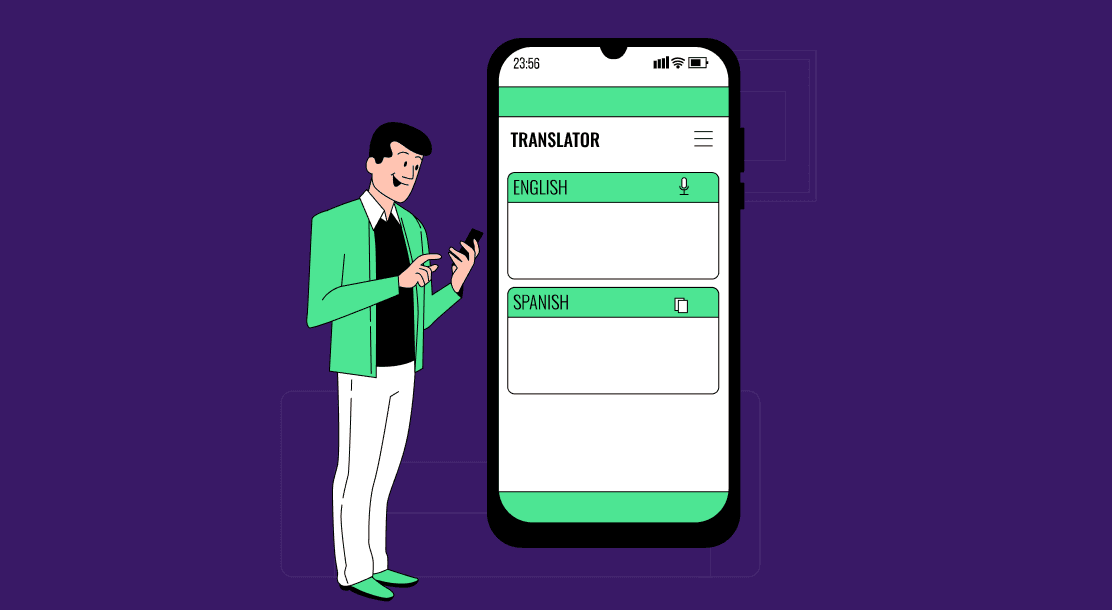Spanish Dialects You Must Know for Spanish Translation

Did you know that Spanish is among the top five most spoken languages globally? According to Statista, over 500 million people use it as a native or a second language. Other surveys show that Spanish is the official language in at least 20 countries worldwide. The number of Spanish speakers is increasing every year.

Mexico has the most Spanish speakers at present, numbering 110 million. The USA and Argentina have 41 million each. Some other countries in which Spanish has a significant presence are Venezuela, Peru, Chile, Ecuador, Guatemala, and Cuba. You’ll also hear it spoken in Asia, Africa, and, of course, Europe.
These facts and figures mean that there is a great demand for Spanish translation services. Spanish is the third most studied language after English and French. Those who speak, write, and translate Spanish to English have a professional advantage.
The reason for the widespread nature of the Spanish language is rooted in the past. Spanish colonizers settled in territories worldwide to trade and rule from the late 15th century onwards. Their language became widely known and spoken. Several forms of Spanish arose because of intermingling with local languages and cultures.
Today, there are at least ten Spanish dialects. Each one has a common base, but there are differences in intonation and meaning.
That is why those who simply Google “translate English to Spanish” or Google “translate Spanish to English” don’t often get accurate results. To correctly translate English to Spanish to Spanish to English, the translator should know the separate dialects and their differences.
Types of Spanish Dialects You Should Know for Spanish Translation
Here’s a list of the different Spanish dialects used worldwide that can help better your Spanish translation.
Castilian
Castilian is the basis of modern Spanish. It was originally spoken in north and central Spain. In the late 15th century, it spread outward to become the standard language of the entire country.
In Spain, the word Castellano (Castilian) can refer to the Spanish language as a whole. Castilian is derived from Latin and also contains many words from Arabic. Nowadays, Castilian is spoken in parts of Spain such as Castile, Madrid, and Salamanca. Speakers in these places regard it as a pure version of Spanish.
Andalusian
This is the dialect that you will commonly hear in southern Spain. It differs from standard Spanish in various ways. Some of them are the pronunciation of “s” and “r” and the dropping of final consonants.
Andalusian speakers say that these differences make their language sound more musical. It is among the most widely spoken dialects in Spain. You will hear it in cities such as Seville, Cordoba, and Granada.

Murcian
Murcia was an independent Moorish kingdom in Spain. In the 13th century, it was incorporated into Castile. Some Spanish speakers feel that Murcian is the hardest Spanish accent to understand on the peninsula.
This is because Murcians speak very quickly. They also use relaxed consonants. That is why it can take some getting used to. Many people who speak Murcian are from the provinces of Albacete, Almería, and Alicante, on or near the Mediterranean coast.
Other dialects on the Spanish peninsula
Castilian, Andalusian, and Murcian apart, other distinct dialects are spoken within the Spanish region. Basque, a separate language, can be heard in parts of northern Spain.
Catalan is the official language of Andorra, also in the north and parts of the east. Then there’s Galician, in the northwest, which shows a Portuguese influence. In the region of Extremadura, in the west of Spain, they speak a vernacular known as Extremaduran.
Canarian
Now, let’s turn to the types of Spanish widespread outside the Spanish peninsula. To begin with, there is Canarian. This is mainly spoken in the Canary Islands in the Atlantic Ocean.
This region was conquered and colonized by the kingdom of Castile in the 15th century. The dialect is similar to Andalusian. The Portuguese language also influences it. As with other dialects, there are differences in pronunciation and vocabulary.
Llanito
Llanito is one of the most unusual Spanish dialects. It is spoken on the island of Gibraltar. Llanito literally means “little plain,” and the language is a mixture of Andalusian Spanish and British English.
This is because before it became a British Overseas territory, Gibraltar was ruled by Spain. Listening to people speak Llanito can be an interesting exercise for those who are fluent in both Spanish and English.
Spanish in North and South America

Latin American Spanish is a legacy of colonization. It is spoken in mainland Mexico, Colombia, Peru, Bolivia, and several other South American countries. According to the region, there are linguistic variations, especially when it comes to the accent.
Spanish is also widely spoken in the United States. The country has the second-largest population of Spanish speakers globally, next to Mexico. This dialect is commonly referred to as Mexican Spanish.
Rioplatense
Rioplatense is a dialect that is mainly spoken in the La Plata river basin of Argentina and Uruguay in Latin America. Some refer to it as River Plate or Argentine Spanish.
A distinct feature of Rioplatense is that it is spoken with an Italian intonation. This is because many Italian immigrants settled in the area in the 19th century. It is also influenced by Native American languages spoken in the area.
Caribbean Spanish
As you probably know, Christopher Columbus introduced Spanish to the Caribbean in the 15th century. Today’s dialect is similar to the Canarian and Andalusian dialects. Caribbean Spanish speakers are mainly found in Cuba, Puerto Rico, and the Dominican Republic. Here, too, the dialect is influenced by the indigenous languages widely spoken before the Spanish conquest.
Equatoguinean Spanish
This dialect is unique because it has official national status in Sub-Saharan Africa. Linguists say it is influenced by the Spanish dialect that early Spanish colonists spoke. It also contains elements of languages from Guinea and Cameroon. Equatoguinean Spanish is spoken by most of the population in Equatorial Guinea, which is on the west coast of central Africa.
What to Look Out For When Learning and Translating Spanish
Translators have to work carefully when translating Spanish to English because of various dialects. In many cases, a basic knowledge of Castilian or a simple “Google translate Spanish” command will not be sufficient. Spanish translation needs more expertise.
There are other factors that aspiring translators should keep in mind. Spanish will be easier to learn for those already proficient in the so-called “Romance Languages,” such as Italian and French, since they share the same roots. English speakers do not have this advantage.
The verb is the core of the Spanish sentence. Translators must be clear about the types of verbs and how they are used. This is essential for proper communication and translation.
That isn’t the only common challenge in Spanish translation. Others include the gender and number agreement between nouns, adjectives, and verbs. These grammatical rules must be learned and constantly practiced.
There is also what is called the subjunctive mood. This is a grammatical tone used for expressing wishes, desires, and suggestions. In Spanish, it is used when the speaker wants to express a perception or attitude towards something. Many Spanish learners find it one of the trickiest grammar topics to master.
Because of the different dialects of Spanish, there are also many types of slang and regional phrases. When you’re learning to be a translator in Spanish, you should be clear about which region the text is from and should check for instances of local usage. In this way, their translations will be accurate and clear.
The Demand for Spanish Translation
Spanish is the third-most used language for web content. Over 41 million native Spanish speakers live in the United States. Nearly 12 million people are bilingual in Spanish and another language. Spanish is also one of the fastest-growing languages. The number of speakers has risen by 233% since 1980.
As we have seen, some form of Spanish is spoken in all corners of the world. In the last decade, the number of speakers has increased by 30% internationally. This is because of population growth in Latin America and the number of learners of Spanish as a second language. According to projections, the number of Spanish speakers will grow rapidly over the next five decades.
That’s why it’s no surprise that Spanish translation is one of the most in-demand professional services. The documents most often translated into Spanish are business and legal contracts, medical documentation, financial records, technical manuals, marketing material, and website copy.

The many types of Spanish mean that translations need linguistic knowledge and regional competence. Expert translators will be able to recognize and understand the dialect used and also employ specific domain knowledge.
With the translation industry on the rise and Spanish gaining even more prominence, Spanish to English translation services will continue to be in great demand.
Conclusion
Today, Spanish is all-pervasive in education, social networks, science, business, economics, and diplomacy. The language is used in almost all corners of the world.
Though it originally spread because of Spain’s imperial outreach, it has evolved into various dialects. Regional cultures and languages have influenced these dialects. There is a common core, but they contain accent, usage, and grammar. variations
Translators should be aware of these variations when it comes to Spanish translation. Texts for translation can come from any country, and a knowledge of the type of Spanish used will help create an accurate translated version.
FAQs
Castilian Spanish is perhaps the most well-known of all Spanish dialects. Castilian Spanish also has the most varied verb conjugations of all Spanish dialects.
Google Translate has made rapid strides in accuracy. However, there are times when it is not wise to rely on it. One example is when it comes to medical texts and medical records.
Spanish has its own rules and patterns that are very different from English. However, linguists say it is one of the easiest languages to learn for English speakers.
It is a form of the language spoken in a specific part of a country or by a specific set of people. Spanish has at least ten dialects that are spoken all over the world.
In Spain and some parts of the Spanish-speaking world, Spanish is called Español and Castellano (Castilian). This differentiates it from other dialects spoken in Spain, such as Galician, Basque, and Catalan.
Latest Blogs
Explore how Google’s 2025 AI search updates triggered ranking chaos. Learn actionable strategies to adapt your SEO for AI Overviews, zero-click searches, and SERP volatility. Stay ahead now.
Learn how to rank on AI search engines like ChatGPT, Perplexity, and Gemini by optimizing your content for authority, structure, and relevance. Stay ahead in AI-driven search with this strategic guide.
Explore the best healthcare SEO services for your medical practice. Improve online visibility and effectively reach more patients in need of your services.
Get your hands on the latest news!
Similar Posts

Translation
5 mins read
All You Need to Know About Language Translation and Terminology Management

Translation
5 mins read
6 Reasons to Translate Content into German

Translation
5 mins read

